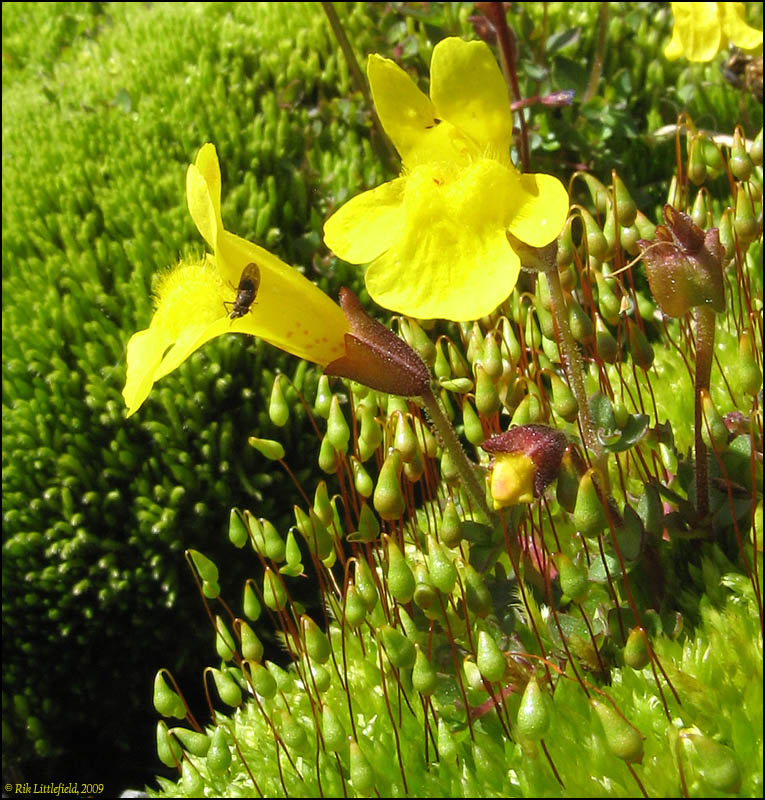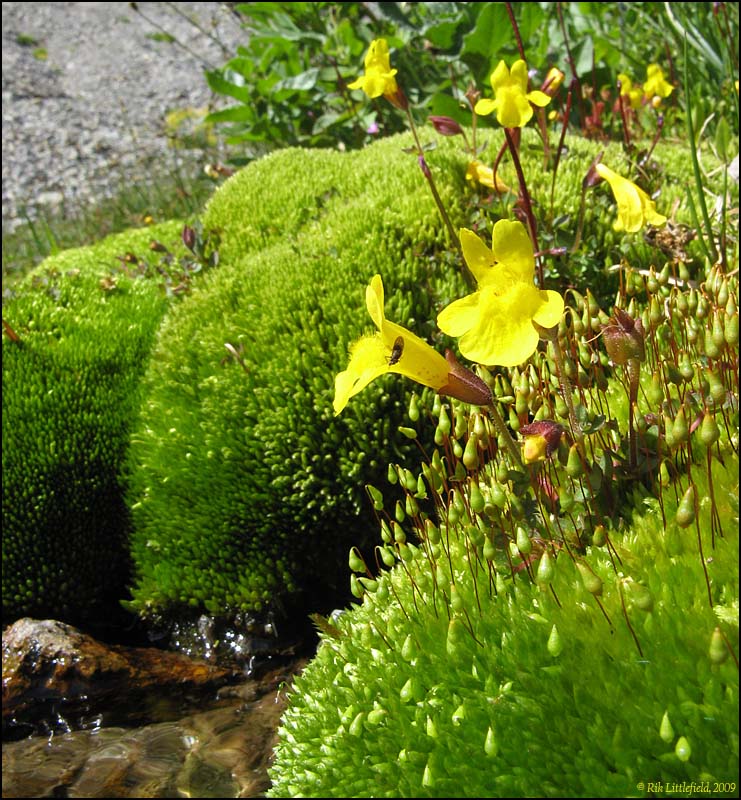

I believe the yellow flower is Mimulus tilingii, one of the "monkey-flowers". The moss and the fly, I have no idea!
This is a souvenir shot from a backpacking trip a couple of days ago.
As seen above, doesn't this look like a luscious place?
And so it is.
But the surroundings are a bit harsh. This is only a few feet away from the base of a nearly barren rockslide at the edge of a glacial valley that has melted out recently. It's very pretty, but the flowers right here are best appreciated through a closeup lens!
The gray background at upper left of the second picture is rockslide. The green splotches on it are a few hardy colonist plants (a different kind -- not monkey-flowers) that have found a bit of dirt between the rocks. Except it's not really dirt, it's volcanic ash. The texture is like beach sand. A very interesting place, like HERE but a little higher.
--Rik
Technical: Canon A710 IS compact point-and-shoot. All images ISO 80, f/8, 1/100 second. Image #1 is a crop from image #2.
Edit: to provide better links.
